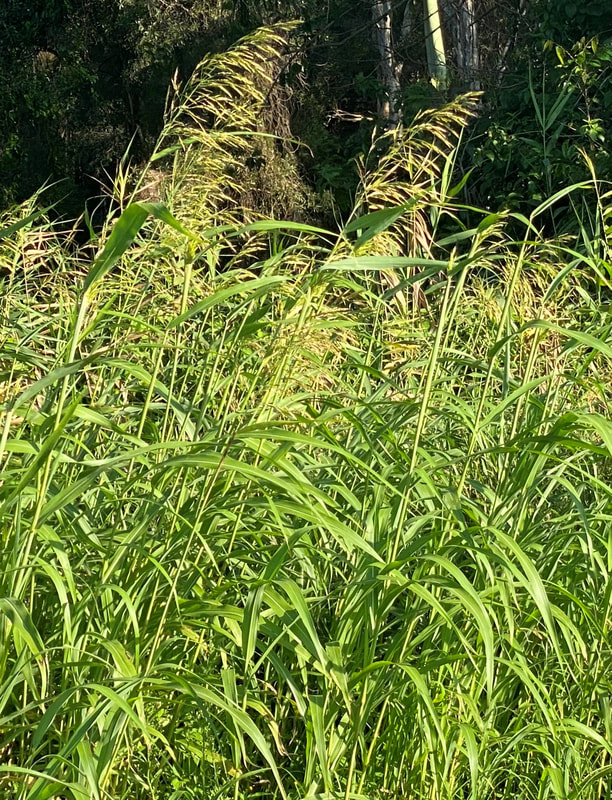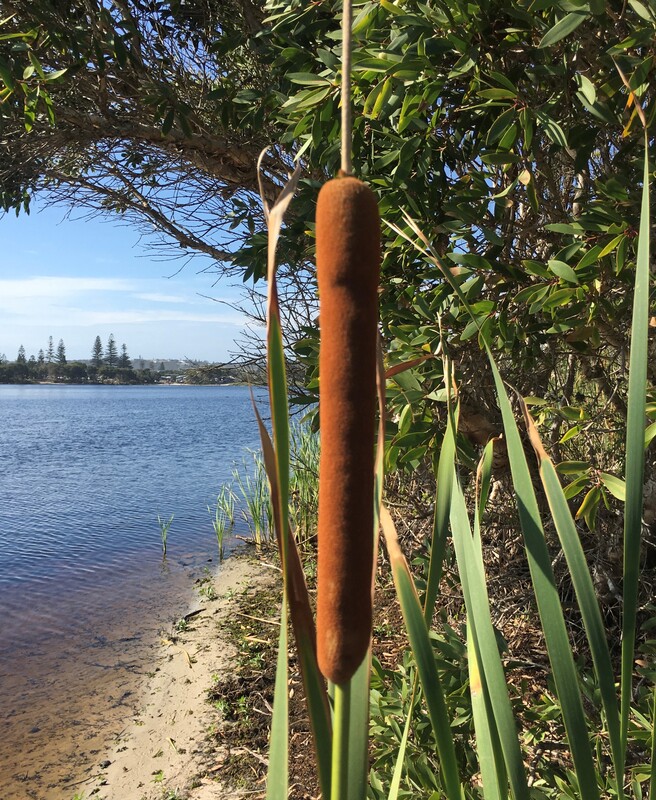Typha and Phragmites - no they’re not two ancient Greek philosophers, nor are they characters from the biblical canon, though there is a link to the latter, but more of that later.
Have you ever wondered about all those reeds that surround Lake Ainsworth? Some of you probably know Typha, the reed with the velvet brown ‘sausage on a stick’ flower spike. It’s also known as Cumbungi or Bulrush. But there’s another very common reed, Phragmites (pronounced – Frag-my-teez). Funnily enough it’s known as ‘Common reed’ and we all should know it because it’s possibly the most common flowering plant in the whole world.
So why are these reeds important and what do they do? Well, I’m glad you asked.
Typha naturally occurs all over eastern and northern Australia and it’s also common throughout Asia, China, and as far away as Russia. It thrives in freshwater wetlands and along the edges of lakes and rivers, in fact anywhere it can keep its feet wet.
Typha helps to stabilise the edges of the lake with its dense growth and intertwined root system and because of its impenetrable nature it makes a perfect sanctuary for animals. Turtles and other fauna shelter between its dense stems, as do fish and the nymphs of aquatic insects. Animals also use it as a food source and its compact nature provides a perfect nesting habitat for birds.
Aboriginal people roasted Typha rhizomes, baked the high protein seeds into biscuits and ate its fresh new tips. The leaves were also weaved into hats, mats and thatch.
Phragmites however can top all that for versatility. It also grows thick and tall protecting the edges of the lake from erosion. It provides protection for a host of birds particularly in breeding season where nests are hidden away from prying eyes.
To humans, its uses are many and varied. The elegant feathery white flowers and its slender leaves inspire artwork. Its roots were pounded into a paste to make a nutritious gruel, or baked in coals. In the Middle East its stems are made into flutes and for thousands of years thatched roofs all over Europe have been made from Phragmites stems.
But wait there’s more! What about its phytoremediation and bioremediation qualities? OK, big words but what do they mean? Basically, Phragmites filters and removes excess nutrients and pollutants from water and it accumulates heavy metals in its rhizomes, stem and leaves so it’s really important in helping maintain the health of the lake.
And remember that biblical canon I alluded to earlier? What about a bloke called Moses? Well, the basket Moses was found in almost certainly was made of Phragmites. Who would have thought? There’ll be talk of ‘walking on water’ next. But that’s another story; anyone heard of the Jesus bird - no? Well, watch this space!
Written by S Web, published march 2020.
Have you ever wondered about all those reeds that surround Lake Ainsworth? Some of you probably know Typha, the reed with the velvet brown ‘sausage on a stick’ flower spike. It’s also known as Cumbungi or Bulrush. But there’s another very common reed, Phragmites (pronounced – Frag-my-teez). Funnily enough it’s known as ‘Common reed’ and we all should know it because it’s possibly the most common flowering plant in the whole world.
So why are these reeds important and what do they do? Well, I’m glad you asked.
Typha naturally occurs all over eastern and northern Australia and it’s also common throughout Asia, China, and as far away as Russia. It thrives in freshwater wetlands and along the edges of lakes and rivers, in fact anywhere it can keep its feet wet.
Typha helps to stabilise the edges of the lake with its dense growth and intertwined root system and because of its impenetrable nature it makes a perfect sanctuary for animals. Turtles and other fauna shelter between its dense stems, as do fish and the nymphs of aquatic insects. Animals also use it as a food source and its compact nature provides a perfect nesting habitat for birds.
Aboriginal people roasted Typha rhizomes, baked the high protein seeds into biscuits and ate its fresh new tips. The leaves were also weaved into hats, mats and thatch.
Phragmites however can top all that for versatility. It also grows thick and tall protecting the edges of the lake from erosion. It provides protection for a host of birds particularly in breeding season where nests are hidden away from prying eyes.
To humans, its uses are many and varied. The elegant feathery white flowers and its slender leaves inspire artwork. Its roots were pounded into a paste to make a nutritious gruel, or baked in coals. In the Middle East its stems are made into flutes and for thousands of years thatched roofs all over Europe have been made from Phragmites stems.
But wait there’s more! What about its phytoremediation and bioremediation qualities? OK, big words but what do they mean? Basically, Phragmites filters and removes excess nutrients and pollutants from water and it accumulates heavy metals in its rhizomes, stem and leaves so it’s really important in helping maintain the health of the lake.
And remember that biblical canon I alluded to earlier? What about a bloke called Moses? Well, the basket Moses was found in almost certainly was made of Phragmites. Who would have thought? There’ll be talk of ‘walking on water’ next. But that’s another story; anyone heard of the Jesus bird - no? Well, watch this space!
Written by S Web, published march 2020.





